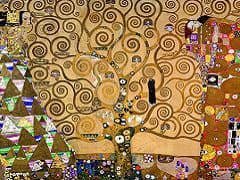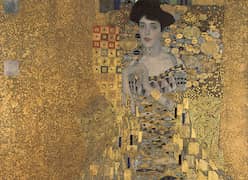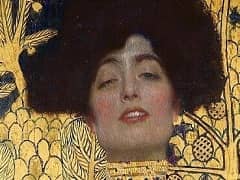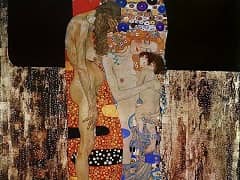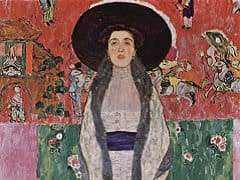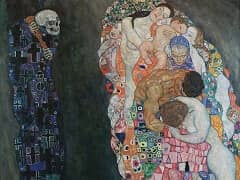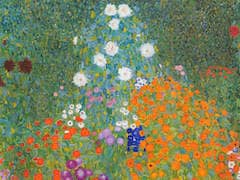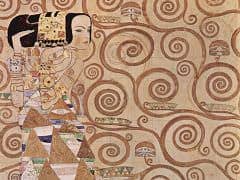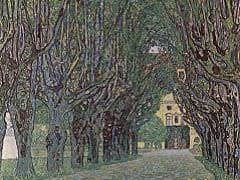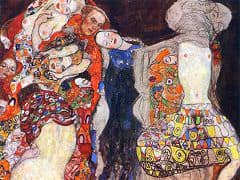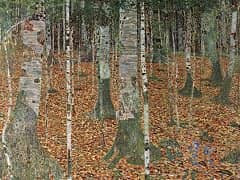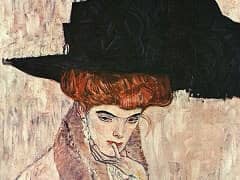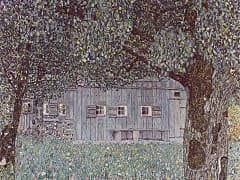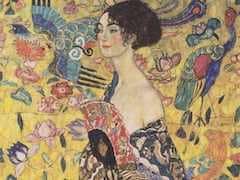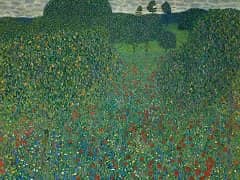Beethoven Frieze, 1902 by Gustav Klimt

Beethoven Frieze was painted by Klimt in 1902 for the 14th Vienna Secessionist exhibition, which was intended to be a celebration of the composer and featured a monumental polychrome sculpture by Max Klinger. Meant for the exhibition only, the frieze was painted directly on the walls with light materials. After the exhibition the painting was preserved, although it did not go on display again until 1986. The Beethoven Frieze is now on permanent display in the Vienna Secession Building.
The frieze illustrates human desire for happiness in a suffering and tempestuous world in which one contends not only with external evil forces but also with internal weaknesses. The viewer follows this journey of discovery in a stunning visual and linear fashion. It begins gently with the floating female Genii searching the Earth but soon follows the dark, sinister-looking storm-wind giant, Typhoeus.
In the first half of this evil vision, a gorilla portrays the giant, Typhoeus, personificaton of the typhoid which plague European cities, including Vienna, in the nineteenth century. The three gorgons, as exotic, tempting sirens, with gold snaking through their hair, were to reappear in the another controversial work by Klimt, Jurisprudence (1899-1907). Above them, crazed, wasted faces of death and syphilitic disease, also prevalent in Viennese society, stare down. Klimt plays with paradoxical themes of ugliness in beauty and death in love, and the work's nudity, with explicit black pubic hair, re-incensed the Viennese establishment.

On the right of the gorilla, the concepts of Lust, Voluptuousness and Intemperance are personified in female form. The large, sagging figure of Intemperance, with her gaudy, bejeweled clothes, looks like a brothel madam; the electric blue skirt is the only resounding color in the entire frieze.
Thence appears the knight in shining armour who offers hope due to his own ambition and sympathy for the pleading, suffering humans. The journey ends in the discovery of joy by means of the arts and contentment is represented in the close embrace of a kiss. Thus, the frieze expounds psychological human yearning, ultimately satisfied through individual and communal searching and the beauty of the arts coupled with love and companionship.


